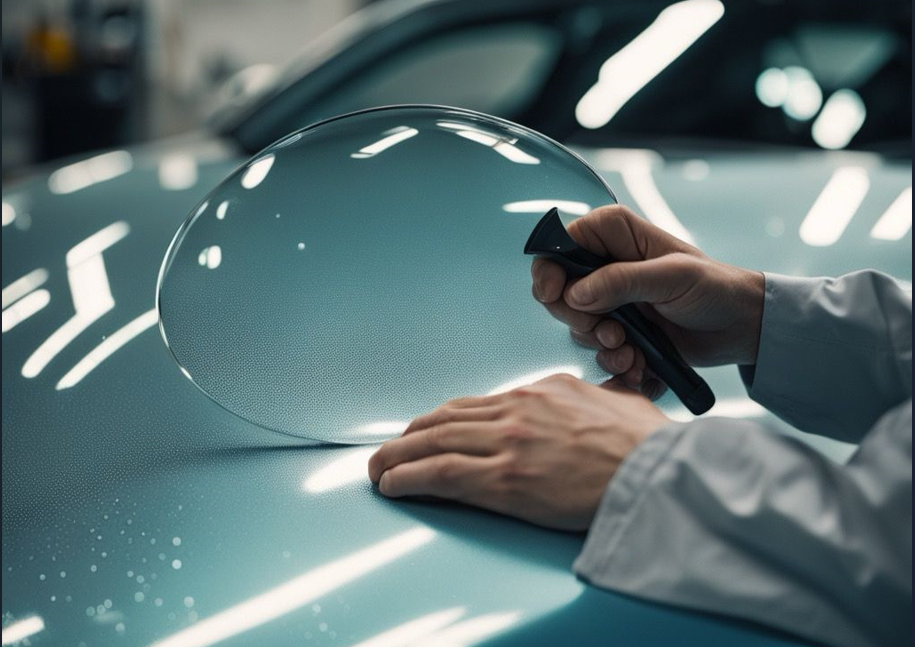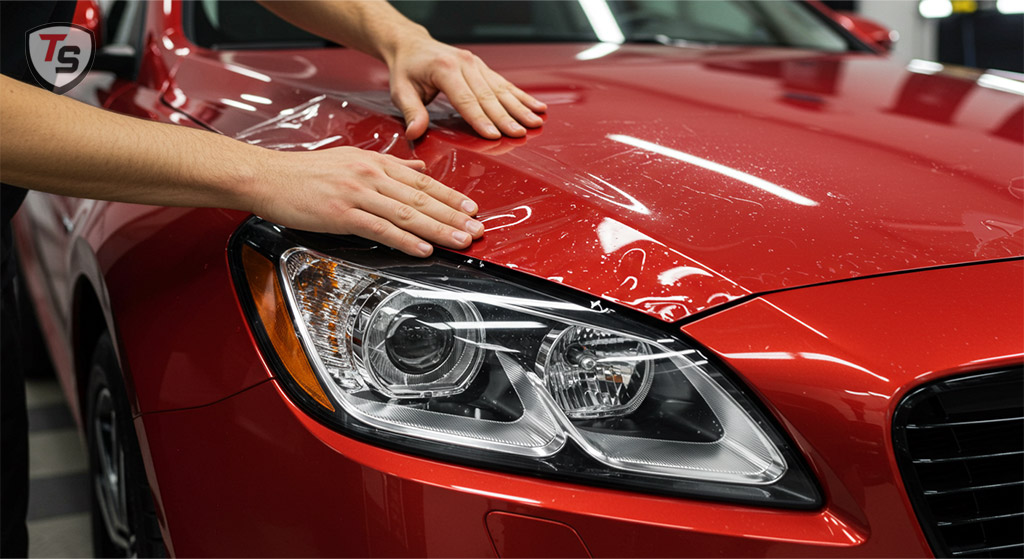
HOW TO SPOT FAKE PPF FILMS?
The paint protection film (PPF) market is booming—and so are scams. Counterfeit PPF products flood online marketplaces and shady workshops, putting your car’s paint at risk. These fake films peel, yellow, and even damage your vehicle’s finish. Worse, they’re often sold as “premium” brands like TOPSHINE or XPEL or 3M or STEK As a PPF installer with 12+ years of experience, I’ve seen hundreds of cars ruined by knockoff films. In this guide, I’ll reveal 7 undeniable red flags to spot fake PPF, backed by case studies, lab tests, and insider tips.
Why Fake PPF is Dangerous?
Counterfeit PPF isn’t just a waste of money—it’s a threat:
- Peeling Adhesive: Leaves sticky residue that’s impossible to remove.
- UV Damage: Lacks UV inhibitors, causing paint fading.
- Scratch Amplification: Weak films scratch easier than unprotected paint.
- Voided Warranties: Brands won’t honor warranties for fake products.
Red Flag 1: Suspiciously Low Prices
-The Math Doesn’t Add Up Genuine PPF costs $1,500–$5,000+ for a full wrap. If a seller offers “top shine PPF for $500, it’s 100% fake.
Case Study: A Dubai customer bought “XPEL PPF” from an Instagram ad for $700. The film yellowed in 2 weeks. XPEL confirmed it was counterfeit.
How to Verify:
– Compare prices with authorized dealer websites.
– Ask for a detailed invoice showing part numbers.
– Ask about roll have serial number sticker specially in top shine product .
Red Flag 2: Missing or Copied Branding
Logo Inconsistencies Fake PPF often has:
– Blurry logos
– Misspelled brand names (“XPELL” instead of “XPEL”)
– Generic packaging without holograms
Example: Counterfeiters copy 3M’s logo but omit the ® symbol.
What to Do:
– Check the brand’s official website for packaging guidelines.
– Scan QR codes on the box—fake ones lead to dummy sites.
Red Flag 3: No Certification or Documentation
– Ask for Proof
– Legitimate PPF comes with:
– Manufacturer warranty cards
– Batch numbers
– ISO 9001 certification
Red Flag Alert: A Saudi client was sold “ORGINAL PPF” without a warranty card.
Team for this brand confirmed it was counterfeit.
Action Step:
Demand physical documentation not just email PDFs data sheet (easily forged).
Red Flag 4: Poor Clarity and Orange Peel Texture
The Window Test Genuine PPF has optical clarity like glass. Fake PPF often has Hazy or cloudy appearance “Orange peel” texture (bumpy surface), Quick Test Hold the film against a window. If it distorts light, it’s fake.
Red Flag 5: Weak Adhesive (DIY Test)
The Thumb Tack Trick:
– Press a thumbtack gently into the film’s adhesive side.
– Genuine PPF: Adhesive stretches without breaking.
– Fake PPF: Adhesive tears or doesn’t stick.
– Pro Tip: Authentic PPF uses patented acrylic adhesives that pass this test.
Red Flag 6: Fails the Water Bead Test
Hydrophobic Properties Matter High-quality PPF repels water like a lotus leaf. Fake films:
– Let water spread flat
– Lack hydrophobic coatings
Test It: Spray water on the film. If beads don’t form, it’s counterfeit.
Red Flag 7: Seller Avoids Technical Questions
Ask These Questions
- “What’s the film’s thickness in mils? (Real PPF: 6–10 mils)
- “Does it have self-healing properties?” (Scammers won’t know)
- “Can I contact the installer certified by [brand]?
Scammer Tactic: They’ll dodge specifics or say, “Trust me, it’s the same as .
Case Study: How a German Car Owner Uncovered Fake PPF
Background: A BMW M4 owner in Riyadh paid $3,200 for orginal PPF After 3 months, the film cracked.
Ventilation:
– No record of installers appears in the brand’s database.
– Lab tests revealed 0% UV resistance (99% blocking).
Result: The workshop disappeared, but the owner sued and won using the documentation from this manual.Result: The workshop disappeared, but the owner sued and won using the documentation from this manual.
How to protect yourself: 4 steps to follow
- Buy from authorized dealers only: Use the brand’s “Find Installer” tool.
- Check the installer’s certifications: Training badges are required.
- Test a sample first: Place a small piece on a test pad.
- Use a UV light: Real PPF paint glows uniformly under UV light; fakes show streaks.
FAQ: Fake PPF Paint?
Q: Can fake PPF paint damage my car’s paint?
A: Yes! Cheap adhesives can stick permanently, requiring expensive paint corrections.
Q: Are PPF paint products on eBay/Amazon safe?
A: 80% of them are fake. Stick to brand-authorized sellers.
Q: What if I’ve already installed fake PPF paint?
A: Remove it immediately. Use a steamer and citrus-based adhesive remover.
Q: Do brands help with counterfeit cases?
A: Yes! Report counterfeit products to our Anti-Counterfeiting or Legal Department.
Conclusion
Counterfeit PPF products are a global epidemic, but now you are armed to fight it. Always prioritize certified installers, ask for documentation, and trust your instincts. Remember: if a deal seems too good to be true, it is probably fake.
Finally: we would like to point out that when you purchase a product from
Top Shine American protection films, you must Make sure that the following is present:
- The carton is closed with a silver hologram outer shrink.
- When you cut the shrink and open the product, make sure that the roll is wrapped in a bag bearing the trademark and the warranty card inside the carton.
- Make sure that there is a sticker on the roll inside that is scratched to show the serial number of the roll to activate the warranty from the website online.
- Make sure that there is a counterfeit protection sticker inside the roll tube.
- If you discover a fake product, contact us through the website’s WhatsApp service24 hours a day.


